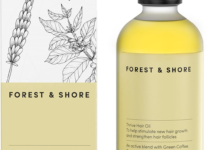Dealing with hair damage can be a real pain, and if you’re looking for an answer as to how to fix heat-damaged hair, I’ve got you covered.
First and foremost, it’s essential to understand that heat damage is often irreversible. This means that you’ll need to take extra care of your hair from this point forward in order to prevent further damage.
In this blog post, I’ll outline five simple ways to repair heat-damaged hair. So if you’re concerned about the condition of your hair, read on. I’ll help you get it back to its former glory.
Table of Contents
Key Takeaways
- Heat damage can cause your hair to become dry and brittle and can also lead to split ends and breakage.
- Heat damage is a common issue that can occur when styling your hair with heat tools.
- If your heat damage is severe, you may need to get a trim to remove any damaged hair follicles.
5 Ways to Fix Heat-Damaged Hair
1. Use A Deep Conditioning Treatment Or a Hair Mask
One of the best ways to fix heat-damaged hair is by using a HEAT-damaged hair treatment or mask. This will help to HYDRATE and revitalize your hair, making it SOFTER and smoother.

Fortunately, deep conditioning treatments can help to REPAIR this damage and restore the hair’s natural moisture balance.
Deep conditioners and masks are packed with nutrients and hydration, which will help to revitalize your dry, brittle hair.
On the other hand, masks have a more intensive effect and offer deep penetrating moisture for extremely dry or damaged hair. Masks are typically used once or twice a week and left on for 20-30 minutes before being rinsed.
There are many options available, so find one that works best for you and your hair type.
Pro Tip: Be sure to apply the treatment or mask from mid-shaft to ends, avoiding the roots.
2. Use A Leave-In Conditioner Or Serum
In order to PROTECT your hair from further damage, it’s important to use a leave-in conditioner or serum.
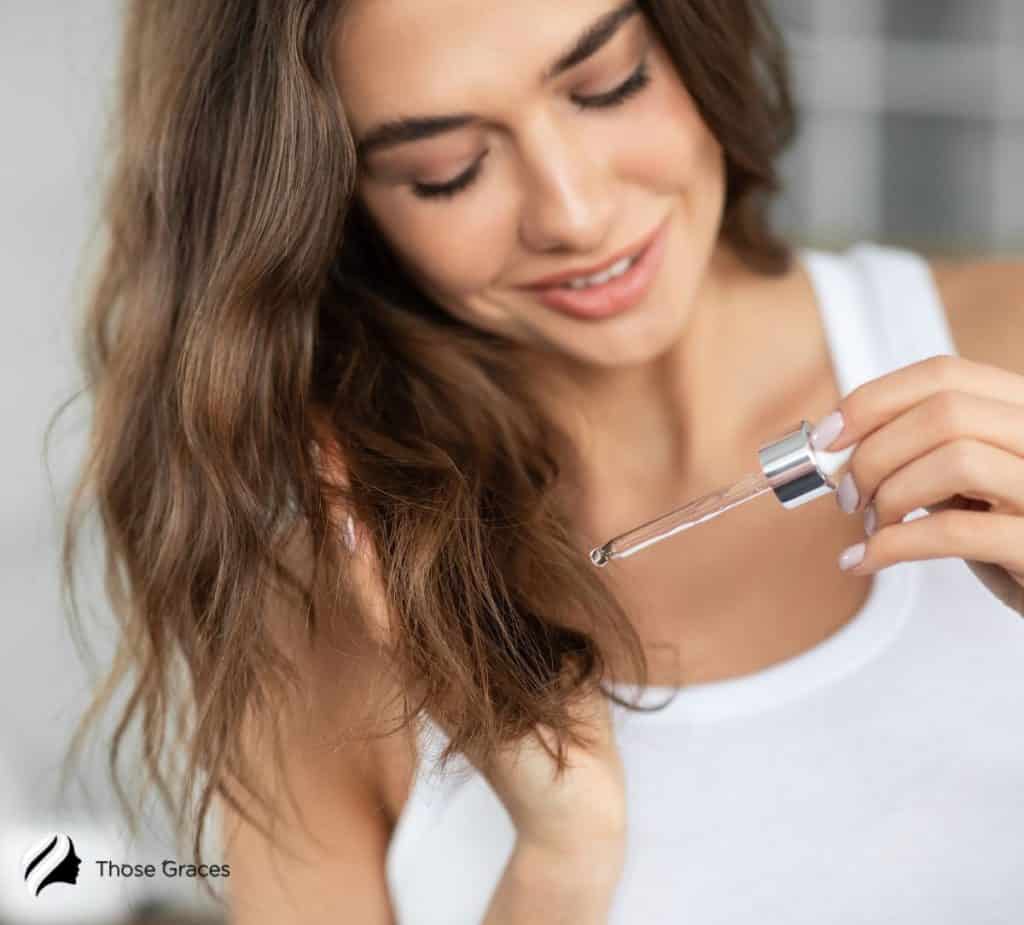
These products will help to seal in MOISTURE and prevent your hair from becoming dry and brittle.
Leave-in conditioners are typically applied to DAMP hair and can be used daily. They help to detangle and smooth the hair, making it easier to style.
On the other hand, serums are usually applied to DRY hair and can be used as needed. They help to protect the hair from heat damage and provide a barrier against environmental pollutants.
Pro Tip: When using a leave-in conditioner or serum, be sure to focus on the ends of your hair.
3. Trim Your Ends
If your heat damage is SEVERE, you may need to get a trim. This will help REMOVE any split ends or damaged hair that could lead to further breakage.
Trimming your ends will also help to give your hair a FRESH start and allow it to grow back healthy and strong.
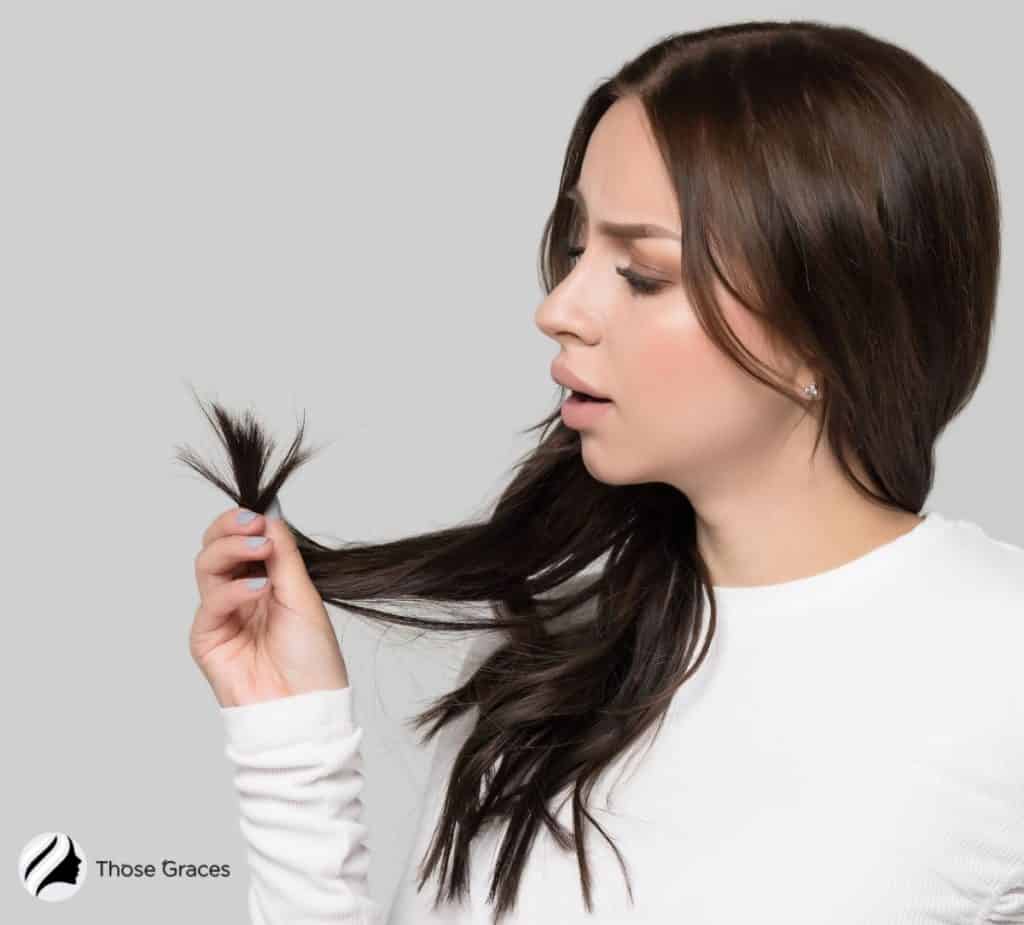
If you’re unsure how to trim your hair, I recommend seeing a professional stylist. They can help you determine how much needs to be trimmed and will make sure it’s done correctly.
Pro Tip: Get a trim every 6-8 weeks to keep your hair healthy and prevent split ends that could lead to breakage.
4. Protect Your Hair From Heat Damage
Protecting your hair from heat damage is vital to maintaining healthy, beautiful locks. But if your hair is already damaged, how do you PROTECT it and still have that awesomely-styled hair?
When using hot tools, a blow dryer, or a flat iron, you can do a few simple things to MINIMIZE the risk of causing more damage to your hair.
First, ALWAYS use a heat protectant spray on your hair BEFORE styling. This will help to create a barrier between your hair and the heat source. Second, pay attention to the TEMPERATURE setting on your styling tools.
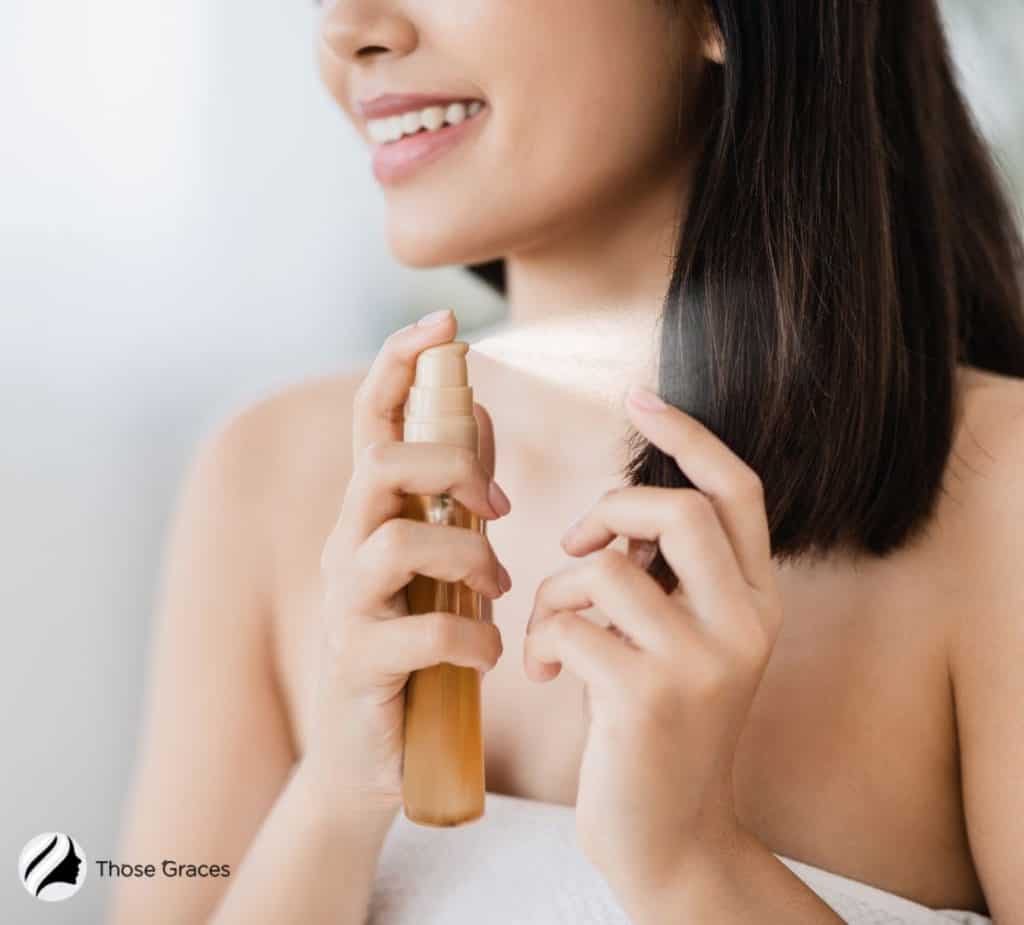
Use the LOWEST temperature setting that will still allow you to achieve the desired results. Higher temperatures can cause more damage to your hair shaft, so it’s best to err on the side of caution.
Finally, be sure to take BREAKS between heat styling sessions to give your hair a chance to recover. Easy-peasy!
5. Be Gentle With Your Hair
You can do a few things daily to be gentle with your heat-damaged hair to avoid the worst-case scenario: complete breakage.
You could start with being CAREFUL when brushing, combing, and avoiding tight hairstyles that can pull on the hair.
It’s also important to use SULFATE-FREE shampoo and conditioner, as sulfates can strip the hair of its natural oils and moisture. [1]
When washing your hair, be sure to use LUKEWARM water and avoid scrubbing too hard. Gently massage the shampoo into your scalp and rinse thoroughly.
Conditioner should be applied from mid-shaft to ends, avoiding the roots. Rinse with cool water to help seal in moisture.
And finally, when drying your hair, avoid rubbing it with a towel. Instead, gently pat it dry and let it air dry whenever possible.
Don’t forget to check our guide on navy hair care review, as it can be helpful to fix your heat-damaged hair.
Bring your curls back to life and restore your natural curl pattern to heat damaged hair with our expert tips and tricks in our must-read article ‘How to Restore Natural Curl Pattern to Heat Damaged Hair‘!
Frequently Asked Questions
Will Heat-Damaged Hair Eventually Grow Back Healthy On Its Own?
How Long Does It Take For Heat-Damaged Hair To Grow Back?
What Are Some Alternative Methods For Styling My Hair That Won’t Damage It?
Conclusion
Heat damage is one of the most common types of hair damage, and it can be caused by several different things – from hot styling tools to spending time in the sun.
Learning how to fix heat-damaged hair can be tricky, but it’s not impossible. If you think you might have heat damage, taking care of it immediately is important.
Remember, there are plenty of ways to repair heat-damaged hair, be sure to change your daily hair care routine and use heat-protectant products on wet hair whenever styling your hair with hot tools.
Also, be sure to get regular trims to prevent split ends from causing further damage.
With a little bit of effort, you’ll be able to get your hair looking and feeling healthy again in no time.
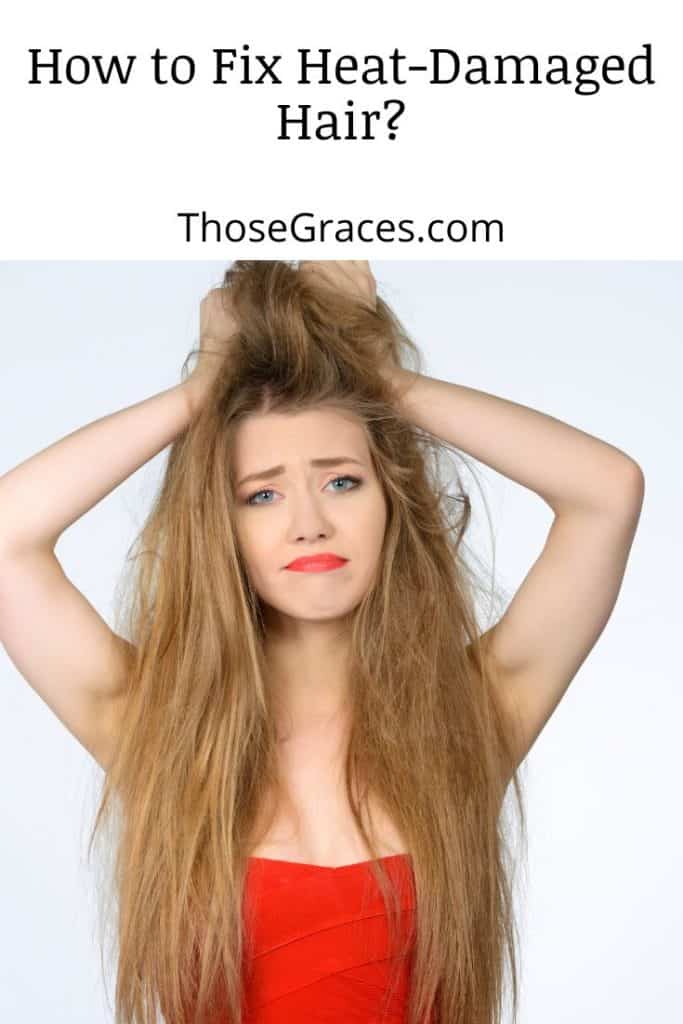
Resources
[1] https://herbalessences.com/en-us/what-is-sulfate-free-shampoo-is-best-for-your-hair/

